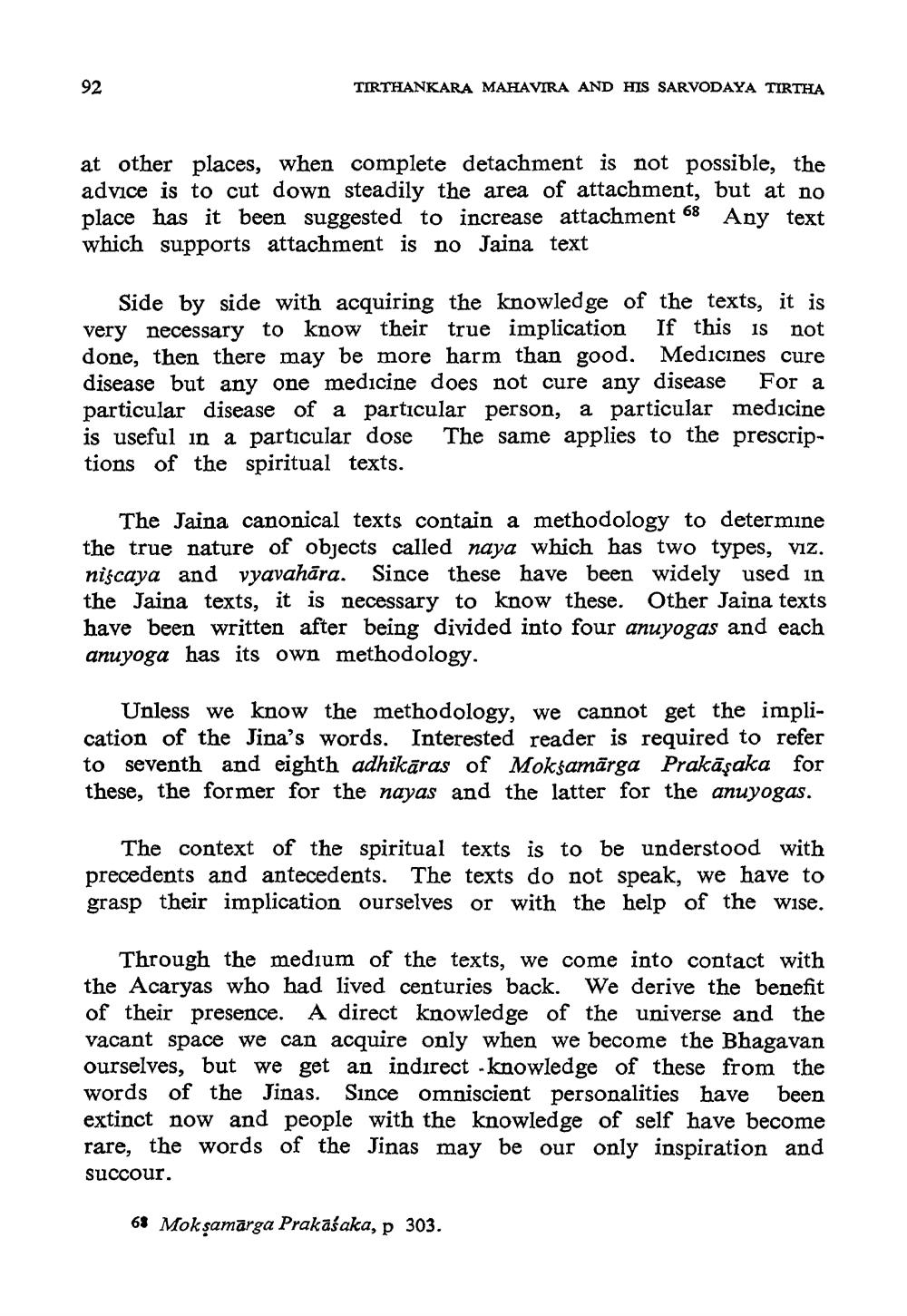________________
TIRTHANKARA MAHAVIRA AND HIS SARVODAYA TIRTHA
at other places, when complete detachment is not possible, the advice is to cut down steadily the area of attachment, but at no place has it been suggested to increase attachment 68 Any text which supports attachment is no Jaina text
Side by side with acquiring the knowledge of the texts, it is very necessary to know their true implication If this is not done, then there may be more harm than good. Medicines cure disease but any one medicine does not cure any disease For a particular disease of a particular person, a particular medicine is useful in a particular dose The same applies to the prescriptions of the spiritual texts.
The Jaina canonical texts contain a methodology to determine the true nature of objects called naya which has two types, viz. niscaya and vyavahāra. Since these have been widely used in the Jaina texts, it is necessary to know these. Other Jaina texts have been written after being divided into four anuyogas and each anuyoga has its own methodology.
Unless we know the methodology, we cannot get the implication of the Jina's words. Interested reader is required to refer to seventh and eighth adhikāras of Moksamärga Prakāşaka for these, the former for the nayas and the latter for the anuyogas.
The context of the spiritual texts is to be understood with precedents and antecedents. The texts do not speak, we have to grasp their implication ourselves or with the help of the wise.
Through the medium of the texts, we come into contact with the Acaryas who had lived centuries back. We derive the benefit of their presence. A direct knowledge of the universe and the vacant space we can acquire only when we become the Bhagavan ourselves, but we get an indirect knowledge of these from the words of the Jinas. Since omniscient personalities have been extinct now and people with the knowledge of self have become rare, the words of the Jinas may be our only inspiration and succour.
68 Mok samarga Prakasaka, p 303.




